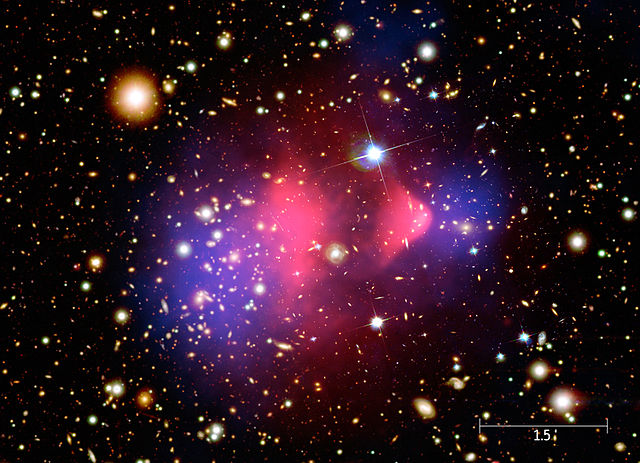It is a wondrous picture. The interstellar wisps are interesting, adding texture to the whole scene. I had no idea the Triangulum Galaxy was so close. It is very small, about 1/2 our size. By this article, it too appears to be approaching us, or at least, has in the distant past, and will in the far flung future.
It is going to be a bigger train wreck than I thought...and we will merge into an even larger whole...
What a GLORIOUS sight the sky is going to be some day....Alien Stars EVERYWHERE....a "marriage made in heaven"?
Many of the images that make APOD are manipulated for one reason or another. Sometimes it is Aesthetics, sometimes for scientific data. It depends on what you want to study or convey...I try for detail, but I also try to bring out color, especially in nebulae. It depends on what I am shooting. Mostly....I just try to get
something....

If a galaxy, I want to see the structure of the arms...if I have to over expose the center....fine...I need the long exposure to get that detail. I suppose, I could take another one of less exposure for the center and then post process that in place of the other, then have both. But that is more work...
My pictures are taken from the driveway in a neighborhood of a city, with a street light about 50 feet away. My original photo is "dingy". Even a 2 minute exposure of a galaxy like M101 is faint, and rather "flat" looking...so, I up the brightness and the contrast, until it looks better to me.
There are "imperfections", heat speckles, that are a camera artifact. I remove them by hand in Photoshop...am I cheating? And yes, I take my Dark Frames, and I still get some anyway. There are also "blotches", dark areas that need to be removed, these can be dirt, or bad camera pixel areas maybe...I have tried to get rid of them from the camera, and the scope many times. I count them as a Camera Artifact, but there is sometimes still dust on the front glass of the scope, even after cleaning it, and my star diagonal.
So, try not to begrudge the astrophotographer too much...it is allot of work. Sometimes it is only Beauty you are after...
So it depends on the intention of the photographer and what type of "truth" he is after. With these "Versus" pictures...I am not quite sure what that is...is it comparison? is it just composition and position in a larger depiction of the night sky? They certainly are not "fighting". "Versus" seems to be out of place here. "And" would be more appropriate to me. We could also be like the "4 planet" photos and say there are 3 galaxies here too...

I enjoy the perspective. And the detail of what else is there besides just a single object. That I appreciate. To see the area as more of a whole. Like Bernard's Loop, and not just The Horse Head Nebula...as fascinating as that is on its own, even in Infrared or Ultraviolet.
Even the STARS are interesting in this image. I notice a "haze" around them. Like I am looking through a thin fog...well, we are...all that dust.
Clear Skys!
:---[===] *
 M31 versus M33
M31 versus M33

